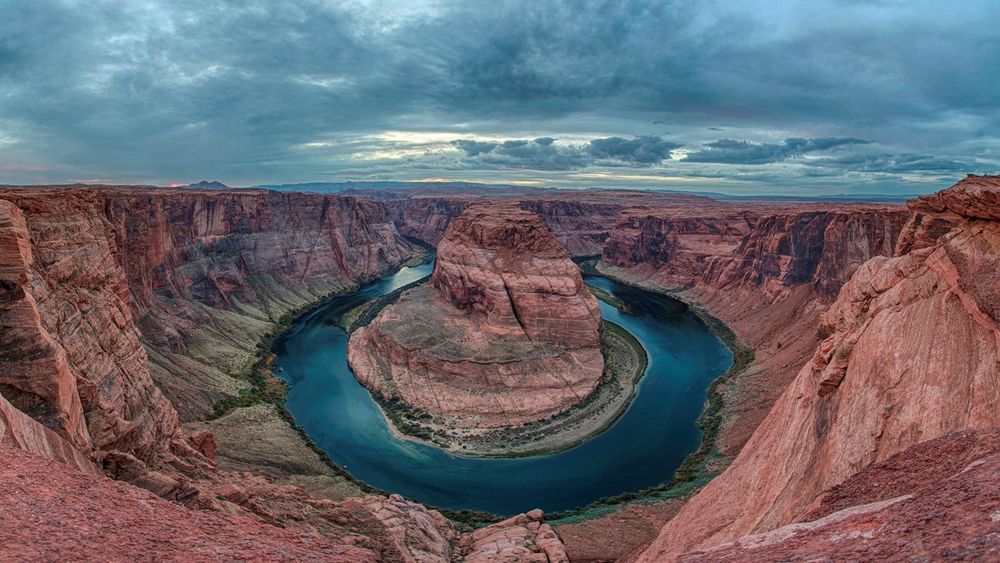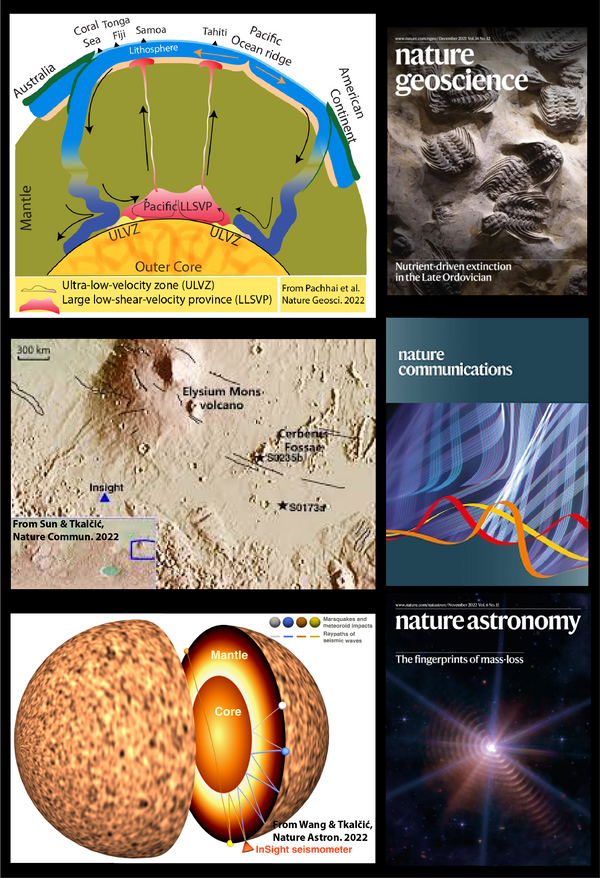Cenozoic landscape evolution in southwestern North America
Proposed mechanisms for Cenozoic landscape evolution in southwestern North America (SWNA) include crustal isostasy, dynamic topography, or lithosphere tectonics, but their relative contributions remain controversial. Recently our study 'Coupled influence of tectonics, climate, and surface processes on landscape evolution in southwestern North America' published in Nature Communications tried to address that.
In this work, we use numerical simulation to help resolve the complex history of the lithosphere dynamics (deformation) and landscape evolution in SWNA, and better understand the source of the extension within the Basin and Range Province (BRP), topographic collapse, metamorphic core complexes formation, and evolution of a deeply incised Grand Canyon.
We reconstruct the landscape history by considering major driving factors that could have affected lithosphere evolution in SWNA since the late Eocene. These driving factors include:
- the effects of gravitational body forces caused by gravity acting on the 3-D structure of the lithosphere,
- the effects of traction field and temperature evolution associated with mantle convection below the NA lithosphere caused by the coupling of mantle flow with the lithosphere,
- the effects of surface erosion and mass redistribution caused by the coupling of the lithosphere with climate and surface processes.
Thus, We develop fully coupled 4-D thermo-mechanical models using the open-source Underworld Geodynamics (UWGeodynamics) code (Beucher et al., 2019).
We argue that high GPE associated with the presence of paleo-highlands is required to explain stress magnitudes and strain orientations along the belt of MCCs in SWNA. As such, while slab rollback was likely critical in the strength evolution of the lithosphere, body forces were the major factors dictating the style of strain history and topographic collapse from the late Eocene to ~10 Ma. This major result confirms the importance of paleo-topography and paleo-crustal structure in driving the early extensional history and demonstrates that our quantified lithospheric stresses can constrain the forces that derive the style of lithospheric deformation in SWNA.
The agreement between predictions from our coupled tectonics, climate, and surface processes models and superficial geological records for sediment distribution and paleo-canyons indicates the importance of reconstruction of erosional and depositional histories and paleo-drainage systems within the context of the evolving dynamic system. Coupled tectonic-climate-landscape models offer an opportunity to refine our understanding of landscape evolution on Earth.

Tectonic history and relation of mantle processes to surface geologic activity of southwestern North America.

Interaction and interconnection between tectonics, climate, and surface processes.
References
- Beucher, R. et al. UWGeodynamics: A teaching and research tool for numerical geodynamic modelling. J. Open Source Softw. 4, 1136 (2019). https://joss.theoj.org/papers/10.21105/joss.01136
- Bahadori, A., Holt, W.E., Feng, R. et al. Coupled influence of tectonics, climate, and surface processes on landscape evolution in southwestern North America. Nat Commun 13, 4437 (2022). https://doi.org/10.1038/s41467-022-31903-2



